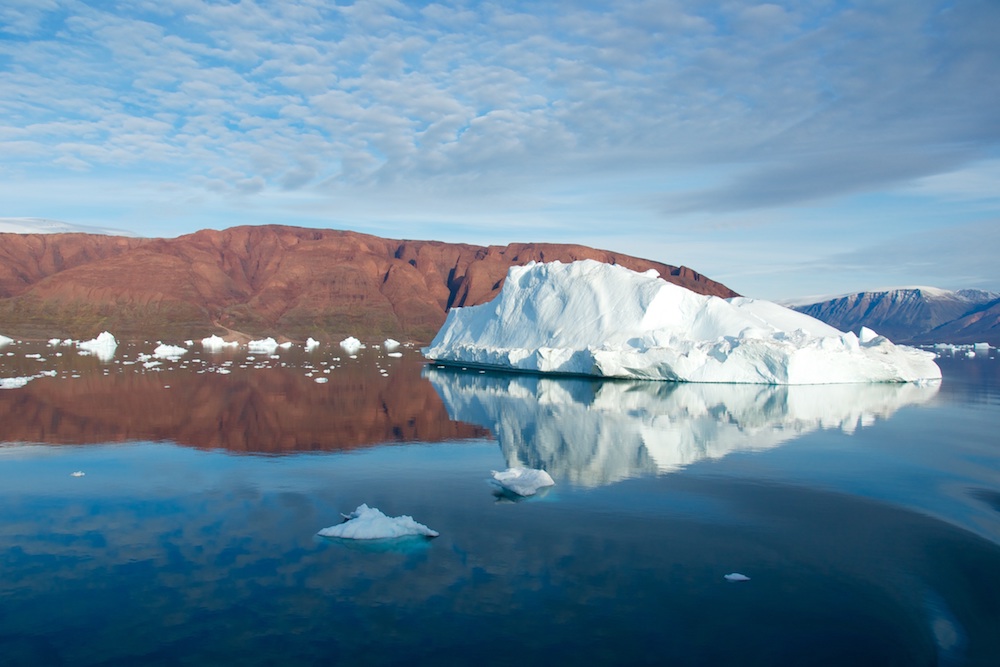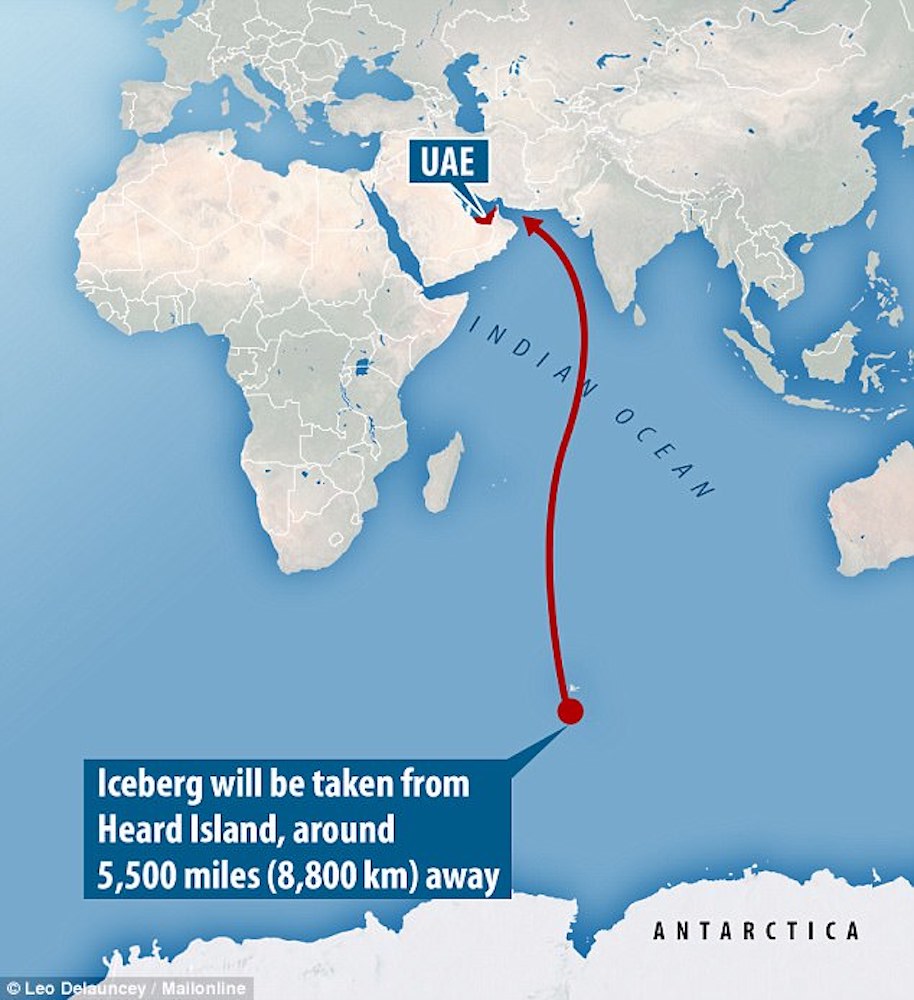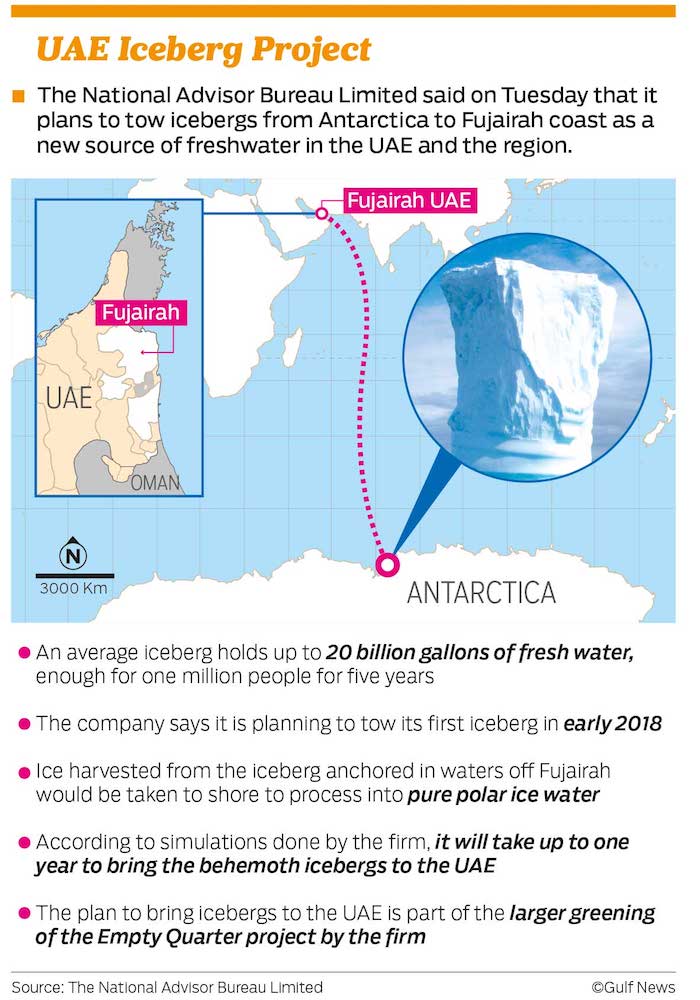Environment
U.A.E. To Tow Iceberg to Solve Drought

In response to an harsh ongoing drought, the United Arab Emirates will soon tow an iceberg from Antarctica and place it near the shoreline of the eastern emirate of Fujairah. An endeavor anticipated to begin in 2018 and take up to a year to complete, the iceberg will provide a new freshwater source which will eventually be mined and converted to drinking water. Abdullah Mohammad Sulaiman Al Shehi, managing director of National Advisor Bureau Limited, (the Abu Dhabi-based eco firm doing the towing), explains that an average-sized iceberg can potentially provide twenty billion gallons of water, enough for one million people over five years. Around eighty percent of an iceberg’s mass usually floats underwater, presumably allowing them to melt very slowly even when placed into the region’s high temperatures. Al Shehi anticipates towing more than one iceberg in the future if all goes as planned. The UAE is currently home to approximately 5.8 million people.
The company hopes the iceberg, once in place, will potentially create a micro-climate,” bringing rain to the hot, dry region. Such micro-climates can occur because, according to Al Shehi, ““It would create a vortex which would draw clouds from all over the region. Cold air gushing out from an iceberg close to the shores of the Arabian Sea would cause a trough and rainstorms across the Arabian Gulf and the southern region of the Arabian Peninsula all year round. As the rising air expands, cools and condenses due to the decrease in air pressure, water vapor is collected in the clouds. They become heavy and fall as rain.”
Al Shehi assured Gulf News in a recent interview that all technical and financial issues had been considered and towing by ship is the most efficient method. The Iceberg Project, detailed on the company website, could also possibly reduce the amount of sea level rise significantly, and is part of a multi-faceted project comprised in Al Shehi’s book, Filling the Empty Quarter, detailed here. The overall goal of the project is the ecological greening of the Rub Al Khali desert.
Once the iceberg is placed offshore, the company will begin the water processing method which involves the polar ice being chipped off and collected from the above water portion of the iceberg. The chips are then to be crushed into water and stored in tanks to be filtered later. “This is the purest water in the world,” Al Shehi said, while declining to comment on the costs anticipated for the move citing proprietary reasons.
Although Al Shehi acknowledges there are challenges to face when moving such massive items across the seas, the planned route is as direct as possible (from the Heard Island region of Antarctica (about 600 miles off the mainland coast of the continent) straight to the shore of Fujairah, a trip of around 5,500 miles total. The route has proven successful when run through simulators which Al Shehi relies upon for the feasibility and guiding framework of the project.

Image: joinfo.com
Noting the brutal heat and water scarcity of the region (the UAE receives less than four inches of rainfall per year and is one of the top ten most water-scarce spots in the world), as well as expectations of climatologists for another 25 years of drought, the UAE excitedly anticipates the arrival of their first iceberg. A secondary benefit of the visiting ice would be the possibility of a tourist attraction, but says Al Shehi, unsurprisingly, “We want it mainly for the water. It could also be good for tourism and the weather.”



0 comments